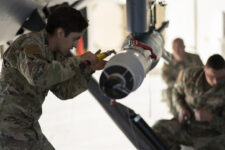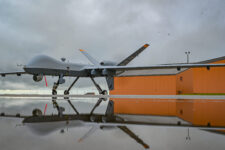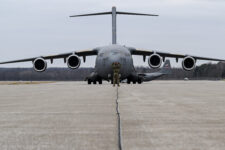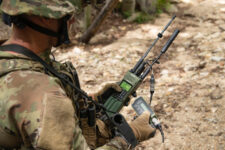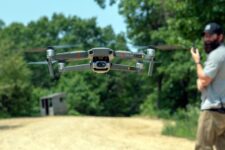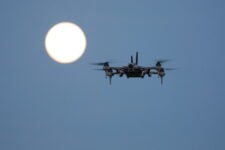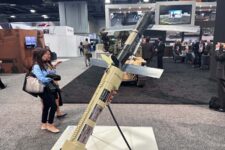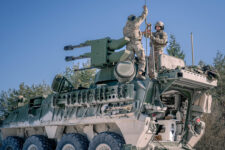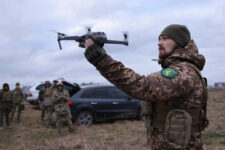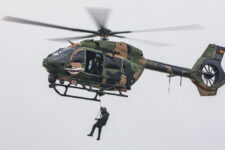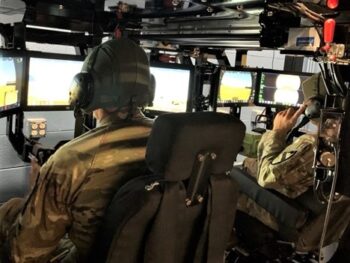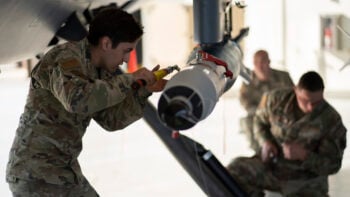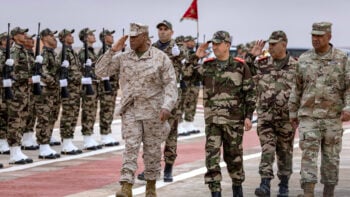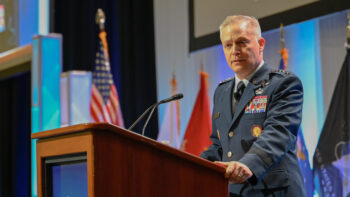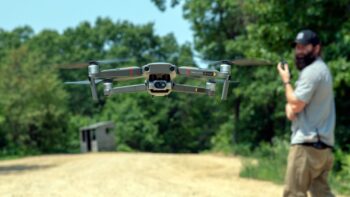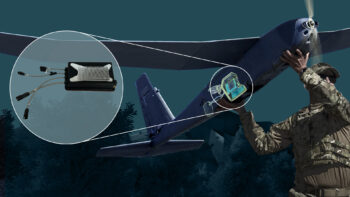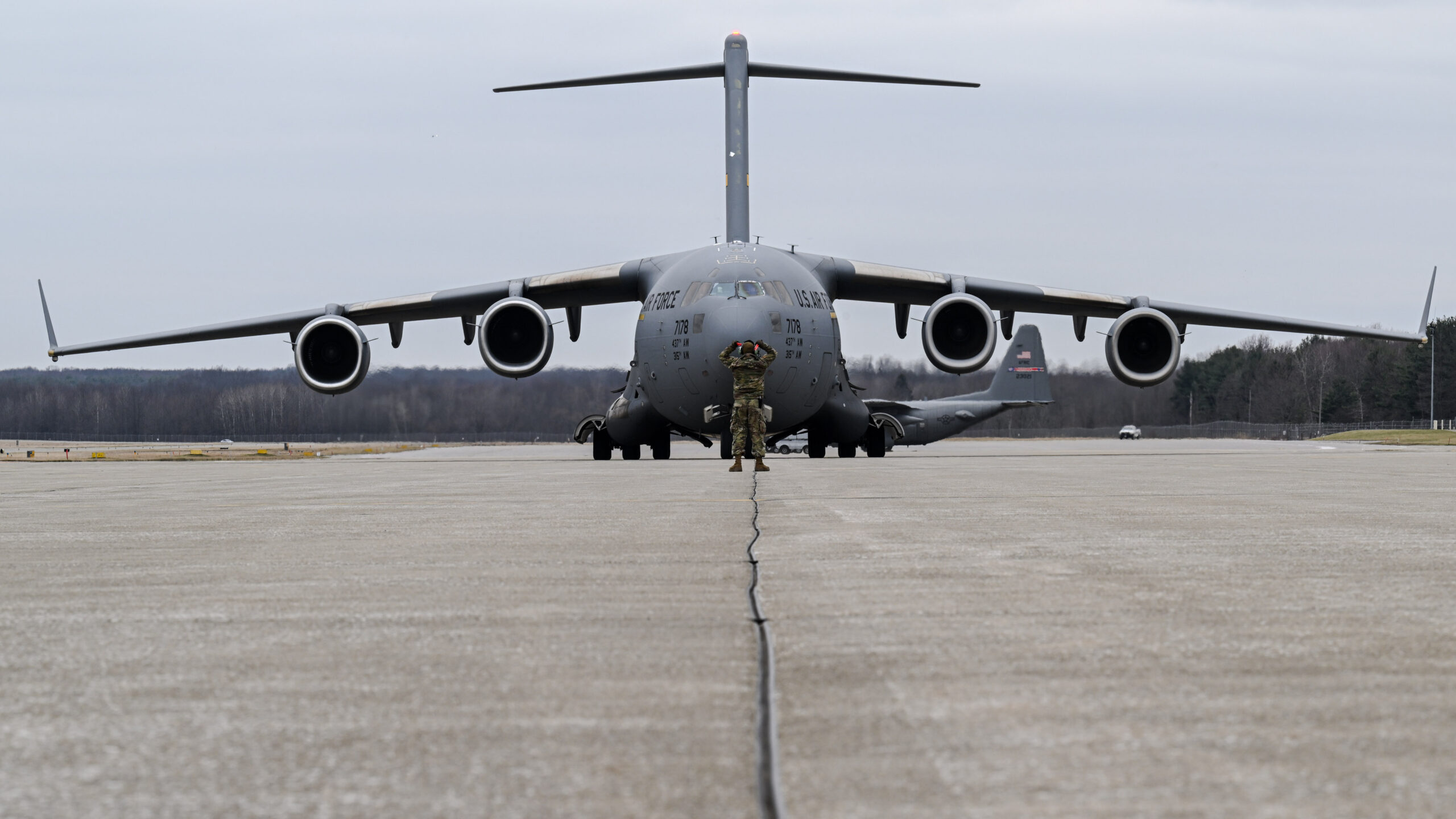
A C-17 Globemaster III assigned to Joint Base Charleston, South Carolina, taxis at Youngstown Air Reserve Station, Ohio, March 3, 2024. (U.S. Air Force photo by Staff Sgt. Christina Russo)
WASHINGTON — The US Air Force is asking industry for help for potentially carrying defensive systems aboard mobility aircraft that can fend off small drones.
According to a request for information (RFI) released by the service today, it’s interested in “concepts and technologies related to an on-aircraft Counter-Small Unmanned Aircraft System (C-sUAS) capability.” The RFI was posted by Air Mobility Command, or AMC, which oversees operations of tankers and transport aircraft — slower, larger platforms typically more vulnerable to enemy attack.
Referring to the Pentagon’s “Group” system for classifying drones, with 1 being the smallest and 5 the largest, the RFI says that “Group 1 and 2 UAS are of primary interest, with an objective capability for Group 3 UAS.” The notice says that a “primary interest” is to field defenses “during critical phases of fixed-wing flight operations below 16,000 feet,” though the effort also seeks capabilities that can defend aircraft during ground operations, such as taxiing.
Mobility aircraft already carry defensive systems, such as flares and laser jammers, to defeat threats like missiles. But the proliferation of drone warfare and increasing civilian use of unmanned systems appears to be motivating the Air Force to field new defenses against UAS threats, particularly as officials warn that adversaries like China could exploit vulnerabilities in logistics operations. Mobility aircraft can sometimes rely on robust base defenses, notes a separate concept of operations (CONOPS) published alongside the RFI, but the prospect of austere operations means crews may have to carry C-sUAS capabilities with them.
The CONOPS explains that AMC not only needs to defend against enemy drones, but also UAS that happen to be in the area but don’t mean harm. The document says that industry solutions should offer greater situational awareness of the presence of drones, as well as minimal crew input to defeat or avoid them if the need arises. Civilian environments further require different considerations, the document says.
For example, a mobility aircraft called upon to aid a humanitarian mission may encounter friendly drones that are lending assistance, which the document notes would be “counterproductive to defeat.” Ideally, a C-sUAS solution would be able to identify friend or foe drones. Likewise, solutions must also be capable of discriminating in commercial settings, since “systems can’t broadly jam/spoof GPS or kinetic kill potential threats if the Vice President’s plane is sitting on a ramp at Frankfurt International airport,” the CONOPS document says.
As such, the RFI and CONOPS suggest the Air Force is interested in kinetic or non-kinetic options, including some that can identify but not necessarily destroy UAS, with AMC particularly interested in capabilities already demonstrated on other platforms that could be integrated on aircraft.
Alongside airborne defenses, the CONOPS document notes that counter-drone tools when aircraft are parked on the ground would need to be small so as to not displace cargo and easily roll on/off the aircraft if it has an accessible ramp. Aircraft lacking such a ramp would likely need hand-carried and rapidly deployable C-UAS systems, or equipment able to be operated aboard the aircraft.
“sUAS may be encountered everywhere, and the likelihood of encounter is increasing with the rapid development of small, inexpensive drones,” the CONOPS document says. AMC is seeking replies by August 28.
The US is losing the race for better munitions. Here’s how to help.
In this op-ed, Will Durant of ETC explains that the US is behind its adversaries in innovating new munitions, and how it can catch up.
